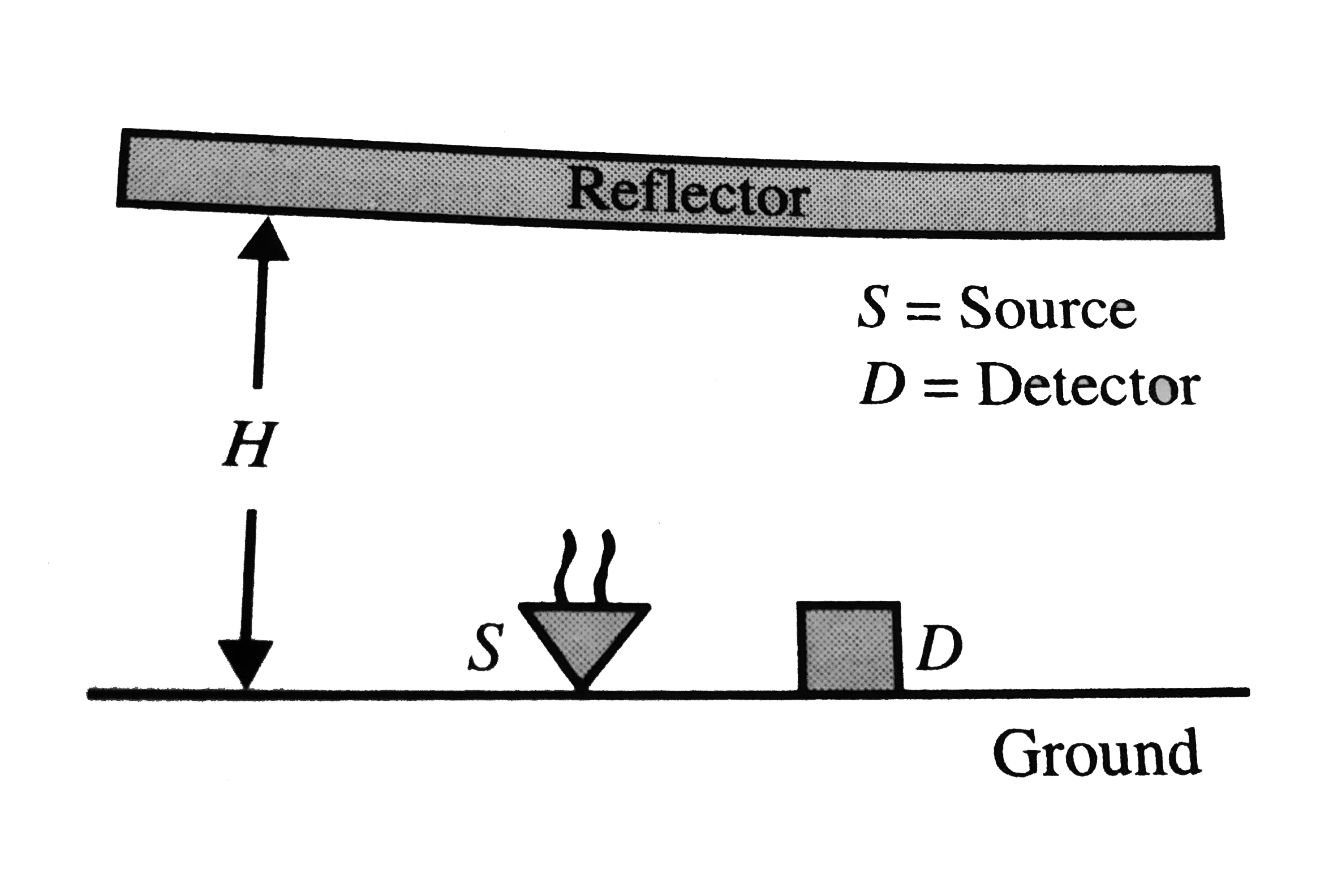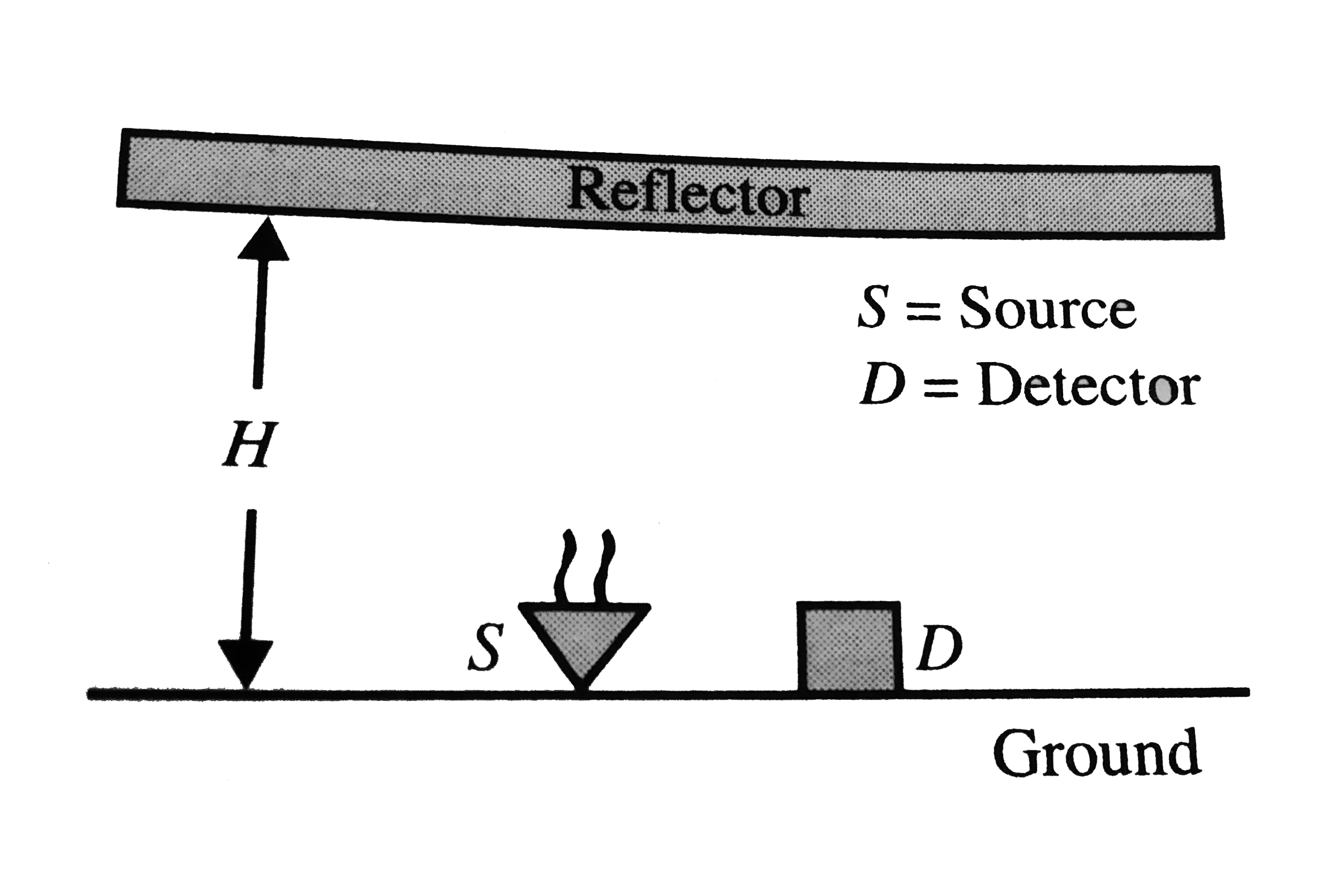Afrain approaches a stationary observer, the velocity of train being (1/20)th of the velocity of sound. A sharp blast is blown with the whistle of the engine at equal intervals of a second. Find the interval between the successive blasts as heard by the observer.
The correct Answer is:n'=Vn/V−Vs=330×n/330−16.5=1.052nt=1/n'−n=19.2second
To solve the problem step by step, we will use the concepts of the Doppler effect in sound waves.
Step 1: Understand the given information
- The train is approaching a stationary observer.
- The speed of sound is denoted as V.
- The speed of the train is V20.
- The train blows a whistle at intervals of 1 second.
Step 2: Identify the relevant formula
We will use the formula for the apparent frequency (f′) as heard by the observer:
f′=f⋅V+VoV−Vs
where:
- f is the actual frequency of the sound (1 Hz, since the whistle is blown every second).
- Vo is the velocity of the observer (0, since the observer is stationary).
- Vs is the velocity of the source (the train), which is V20.
Step 3: Substitute the values into the formula
Since the observer is stationary (Vo=0), the formula simplifies to:
f′=f⋅VV−Vs
Substituting f=1 Hz and Vs=V20:
f′=1⋅VV−V20=VV(1−120)=VV⋅1920=2019
Step 4: Calculate the time period for the apparent frequency
The time period (T′) is the reciprocal of the apparent frequency:
T′=1f′=12019=1920 seconds
Final Answer
The interval between the successive blasts as heard by the observer is 1920 seconds.
---
- The train is approaching a stationary observer.
- The speed of sound is denoted as V.
- The speed of the train is V20.
- The train blows a whistle at intervals of 1 second.
We will use the formula for the apparent frequency (f′) as heard by the observer:
f′=f⋅V+VoV−Vs
where:
- f is the actual frequency of the sound (1 Hz, since the whistle is blown every second).
- Vo is the velocity of the observer (0, since the observer is stationary).
- Vs is the velocity of the source (the train), which is V20.
Since the observer is stationary (Vo=0), the formula simplifies to:
f′=f⋅VV−Vs
Substituting f=1 Hz and Vs=V20:
f′=1⋅VV−V20=VV(1−120)=VV⋅1920=2019
The time period (T′) is the reciprocal of the apparent frequency:
T′=1f′=12019=1920 seconds
The interval between the successive blasts as heard by the observer is 1920 seconds.
Topper's Solved these Questions
Similar Questions
A source of sound with natural frequency f0=1800Hz moves uniformly along a straight line separated from a stationary observer by a distance l=250m. The velocity of the source is equal to η=0.80 fraction of the velocity of the sound.
Q. The distance between the source and the observer at the moment when the observer receives a frequency f=f0 is

View SolutionA sound source emitting sound of frequency 450 Hz is approaching a stationary observer with velocity 30ms−1 and another identical source is going away from the observer with the same velocity. If the velocity of sound is 330ms−1, then the difference of frequencies heard by observer is
View Solution
Knowledge Check
Two tuning forks of frequencies 256 and 258 vibrations/second are sounded together. Then the time interval between two consecutive maxima heard by an observer is
A2 secondB0.5 secondC250 secondD252 second
when a source is going away from a stationary observer with the velocity equal to that of sound in air , then the frequency heard by observer is n times the original frequency . The value of n is
View SolutionA source of sound with natural frequency f0=1800Hz moves uniformly along a straight line separated from a stationary observer by a distance l=250m. The velocity of the source is equal to η=0.80 fraction of the velocity of the sound.
Q. Find the frequency of osund received by the observer at the moment when the source gets closest to him.

View SolutionA source of sound with natural frequency f0=1800Hz moves uniformly along a straight line separated from a stationary observer by a distance l=250m. The velocity of the source is equal to η=0.80 fraction of the velocity of the sound.
Q. Find the frequency of osund received by the observer at the moment when the source gets closest to him.

View SolutionOne train is approaching an observer at rest and another train is receding him with same velocity 4ms−1 . Both the trains blow whistles of same frequency of 243 Hz. The beat frequency in Hz as heard by the observer is (speed of sound in air=320ms−1 )
View SolutionTwo trains approach each other along pentiel tancks each moving with a velocity 2 m/s. A whistle of frequency 250 Hz is sounded on ench train. Find the frequency of hers between the two suces as heard by the listener on the other train. Velocity of sound is 332 ms.
View SolutionAn observer rides with a sound source of frequency f and moving with velocity v towards a large vertical wall. Considering the velocity of sound waves as c, find :
(i) The number of waves striking the surface of wall per second
(ii) The wavelength of the reflected wave
(iii) The frequency of reflected wave as observed by observer.
(iv) Beat frequency heard by the observer.
View SolutionA pendulum has a frequency of 4 vibrations per second. An observer starts the pendulum and fires a gun simultaneously. He hears the echo from the cliff after 6 vibrations of the pendulum. If the velocity of sound in air is 340 m/s, find the distance between the cliff and the observer.
View Solution
